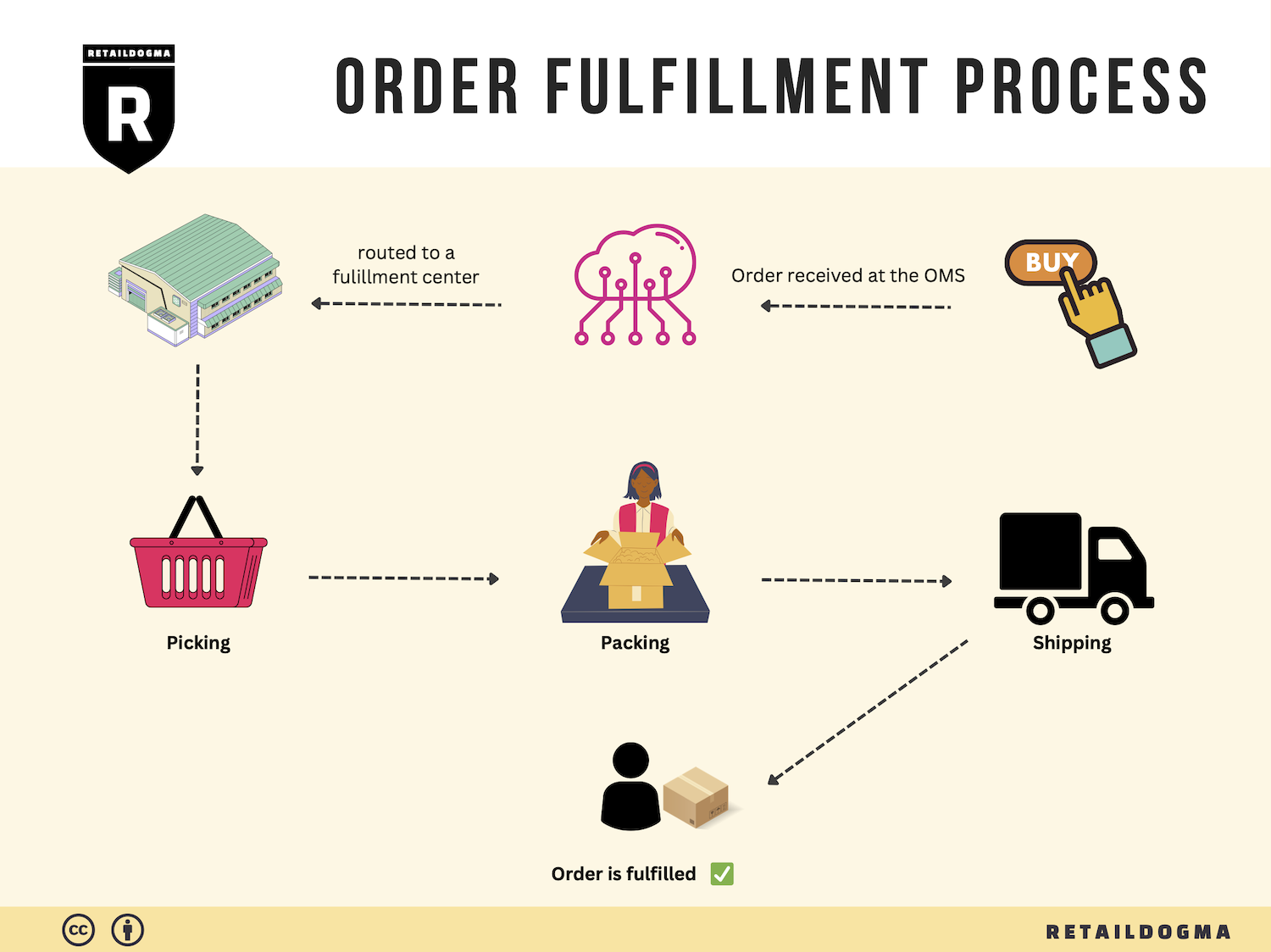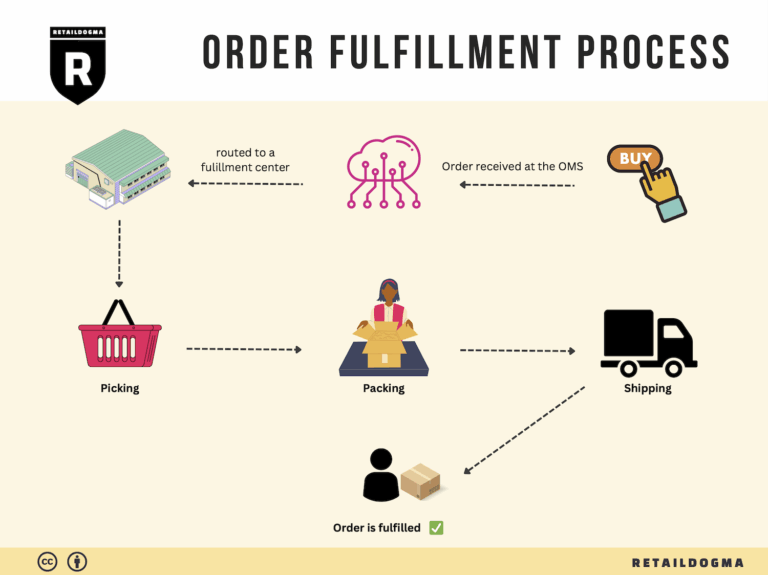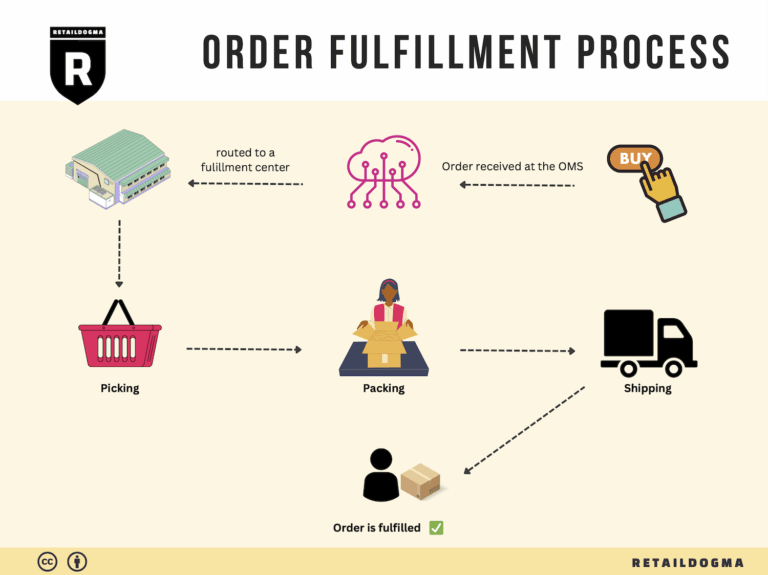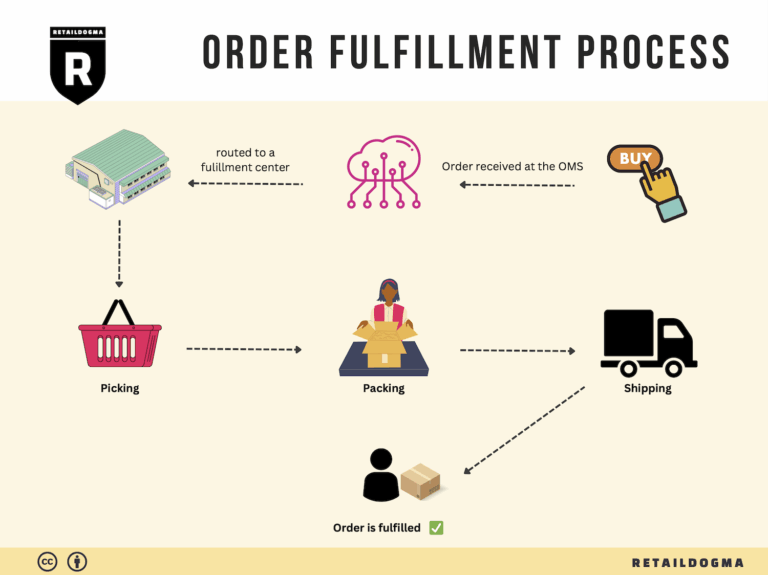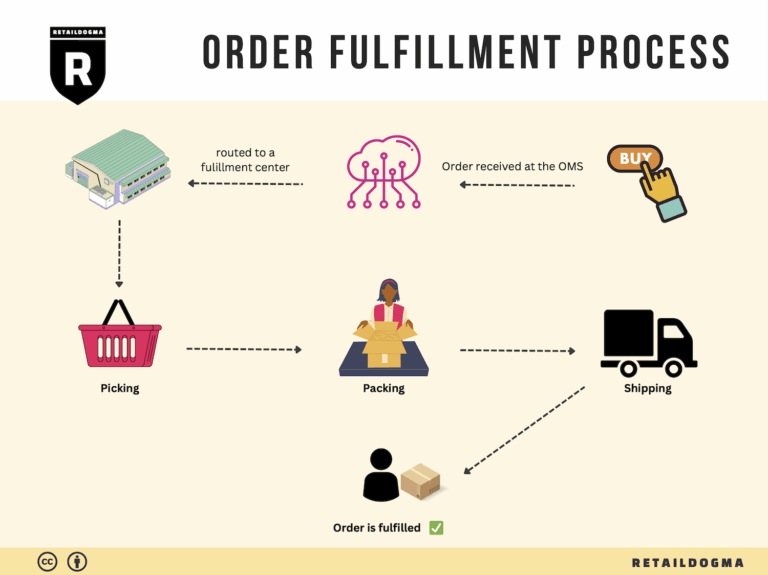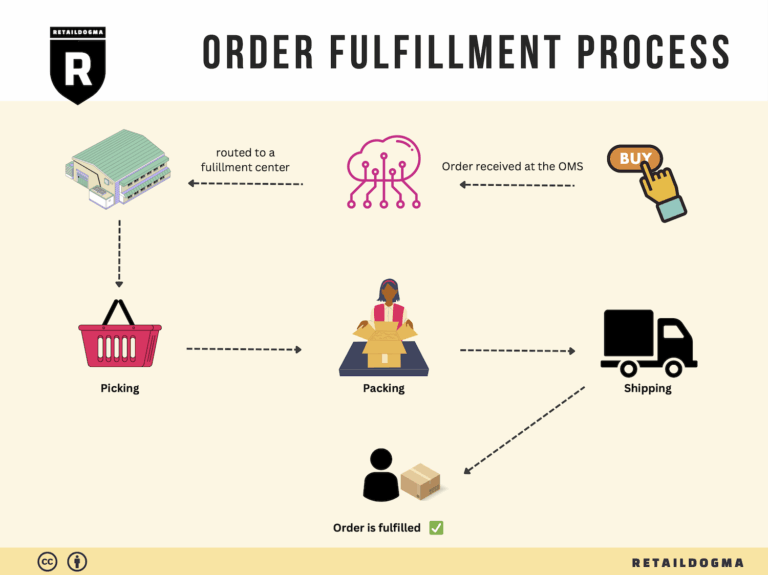How Order Fulfillment Works: A Step-by-Step Guide for Businesses
What is E-commerce Fulfillment? An Introduction for Growing Businesses
Understanding E-commerce Fulfillment: A Key to Scaling Your Business
As an e-commerce business owner, one of the most common challenges you face is managing the overwhelming task of packing and shipping orders. The excitement of growing sales can quickly turn into a logistical nightmare if you find yourself inundated with order processing, inventory management, and shipping logistics. This is where e-commerce fulfillment comes into play.
At its core, fulfillment is the process of getting a product from your warehouse to your customer’s doorstep. It encompasses everything from receiving inventory, storing products, picking and packing orders, to managing returns. For many growing businesses, outsourcing these functions to a third-party logistics (3PL) provider can be a game-changer, allowing you to focus on scaling your operations and enhancing your customer experience.
In this guide, we will explore the various fulfillment models available to e-commerce businesses, including 3PL services and Fulfillment by Amazon (FBA). Each model has its unique advantages and is suited for different types of businesses, depending on your specific needs and goals.
We will also cover the core services that fulfillment partners typically offer, such as order processing, inventory management, shipping solutions, and returns handling. Understanding these services will help you identify which aspects of fulfillment are essential for your business and how you can leverage them to improve efficiency.
Moreover, choosing the right fulfillment partner is crucial. We’ll provide insights on how to evaluate potential partners, including key factors such as technology integration, shipping capabilities, and customer support.
Finally, we will delve into pricing structures associated with fulfillment services, helping you make informed decisions that align with your budget while maximizing your profit margins.
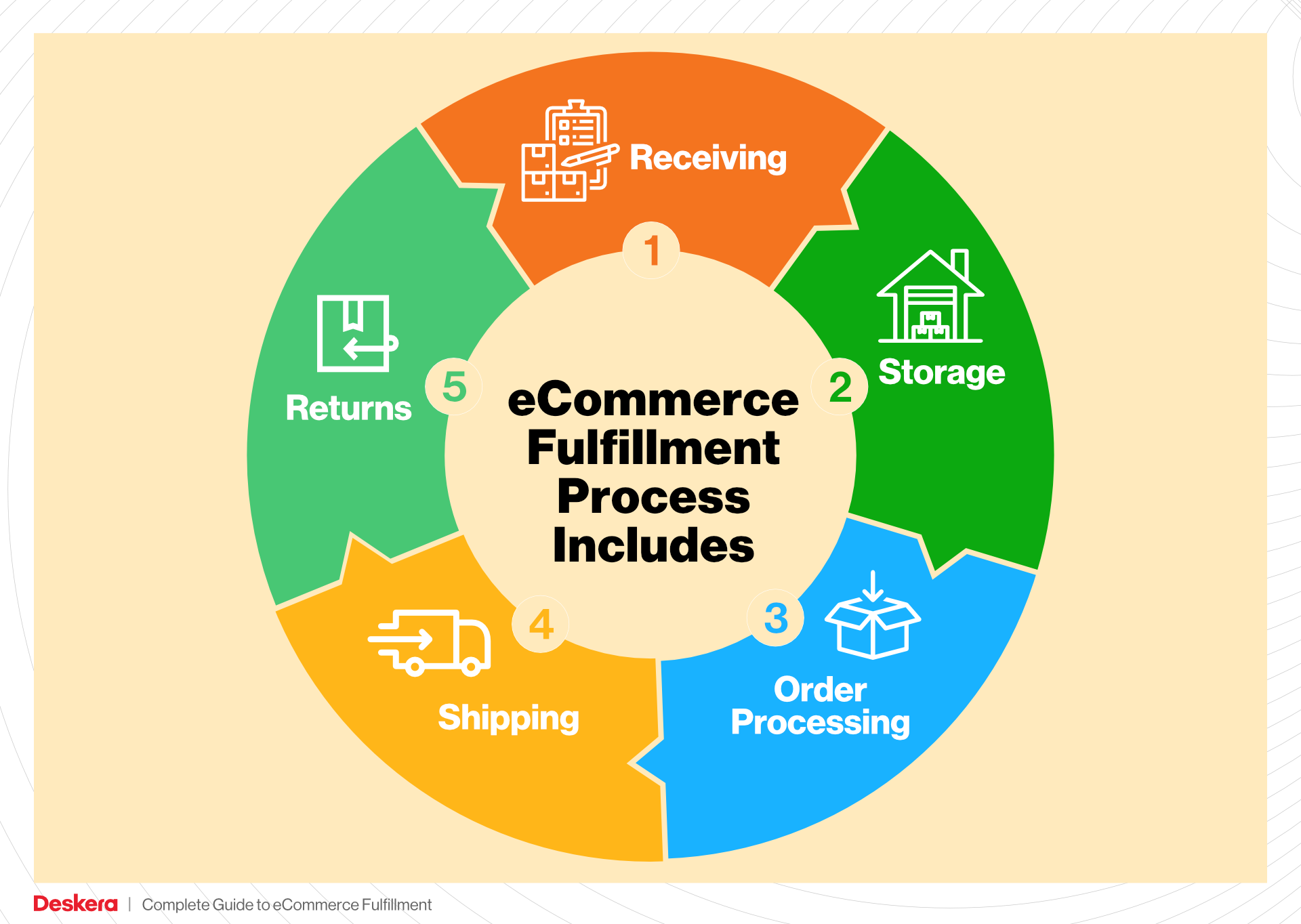
The goal of this guide is to empower you to make smart, informed decisions about your logistics strategy. By understanding the complexities of e-commerce fulfillment and how to effectively manage it, you can streamline your operations, reduce costs, and ultimately provide a better experience for your customers. With the right approach, fulfillment can transform from a burden into a strategic advantage for your growing business.
What You’ll Learn In This Guide
- What is E-commerce Fulfillment? An Introduction for Growing Businesses
- The Order Fulfillment Process: From ‘Buy’ Button to Customer’s Door
- Comparing Fulfillment Models: In-House vs. 3PL vs. Dropshipping
- A Deep Dive into Amazon FBA: Pros, Cons, and Who It’s For
- Core Services Offered by Fulfillment Centers
- How to Choose a Fulfillment Partner: A 6-Point Checklist
- Understanding Fulfillment Pricing: A Breakdown of Common Fees
- Frequently Asked Questions (FAQs) about Fulfillment
- Conclusion: Is Outsourcing Fulfillment the Right Move for Your Business?
- Important Disclaimer
The Order Fulfillment Process: From ‘Buy’ Button to Customer’s Door
1. Receiving Inventory
The first step in the order fulfillment process is receiving inventory. This involves accepting shipments of products from suppliers and verifying that the quantity and quality of the items match the purchase orders. Upon arrival, each item is checked against its SKU (Stock Keeping Unit), which is a unique identifier that helps track inventory levels.
Importance: Proper receiving is crucial because it sets the foundation for accurate inventory management. Discrepancies at this stage can lead to stockouts or excess inventory, both of which can significantly impact sales and customer satisfaction. Effective receiving also minimizes the risk of shrinkage (loss of inventory due to theft, damage, or mismanagement).
Key Term: SKU – A unique identifier for each product that aids in inventory tracking and management.
2. Warehouse Storage
Once inventory has been received and verified, the next step is warehouse storage. This involves organizing products in a manner that maximizes space and ensures easy access. Warehouses may use various systems, including FIFO (First In, First Out) or LIFO (Last In, First Out) for storage strategies, depending on the nature of the products.
Importance: Efficient storage is vital for facilitating quick order picking and minimizing the time spent searching for items. A well-organized warehouse can also reduce labor costs and improve safety, as employees can navigate the space more effectively. Additionally, proper inventory storage helps maintain product integrity, especially for items that are sensitive to environmental factors.
Key Term: FIFO – A method of inventory management where the oldest stock is sold first, often used for perishable goods.
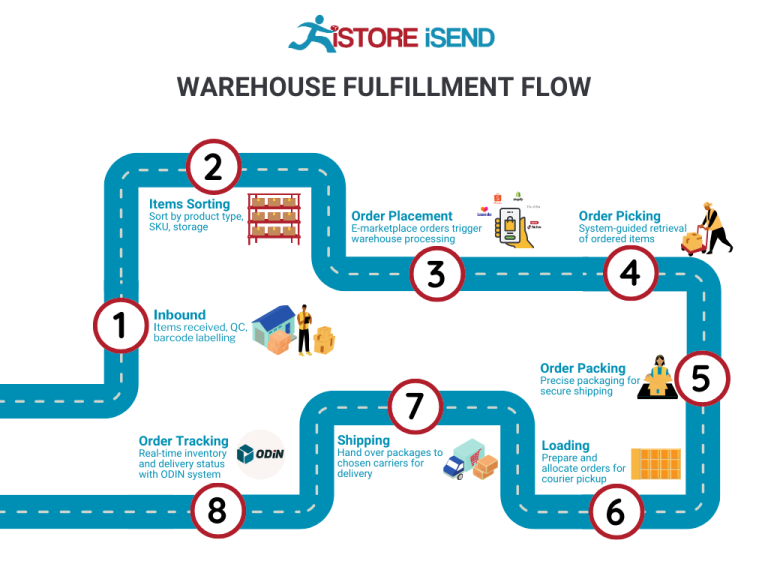
3. Order Picking
The third step is order picking, where warehouse staff retrieve products from storage to fulfill customer orders. This process is often guided by pick lists, which are documents detailing the items needed for each order, including their locations within the warehouse.
Importance: Effective order picking is essential for timely fulfillment. Delays in this stage can lead to increased lead times, which can negatively impact customer satisfaction. Advanced picking methods, such as batch picking (picking multiple orders at once) or wave picking (grouping orders based on shipping schedules), can enhance efficiency and reduce labor costs.
Key Term: Pick List – A document or digital file that outlines the items to be picked for an order, including their locations in the warehouse.
4. Order Packing
After items have been picked, they move to the order packing stage. This involves securely packaging the items for shipment, ensuring that they are protected during transit. Packing processes may vary based on the type of product, with considerations for weight, fragility, and size.
Importance: Proper packing is crucial for preventing damage during shipping, which can lead to costly returns and dissatisfied customers. Additionally, packing provides an opportunity for branding; businesses can include marketing inserts or personalized messages, enhancing customer engagement and loyalty.

Key Term: Packaging – The materials and methods used to encase products for protection during transport, which can also serve a marketing function.
5. Shipping & Delivery
The final step in the order fulfillment process is shipping and delivery. Once orders are packed, they are handed off to carriers for transportation to the customer’s address. This step often involves generating shipping labels, tracking numbers, and notifying customers about their order status.
Importance: Fast and reliable shipping is a key differentiator in e-commerce. Customers expect timely delivery, and delays can damage a brand’s reputation. Therefore, businesses must choose the right shipping partners and methods to balance cost and speed. Additionally, providing tracking information enhances the customer experience by keeping them informed about their order’s progress.
Key Term: Tracking Number – A unique code assigned to a shipment, allowing customers to monitor the status and location of their package during transit.
By understanding and optimizing each step of the order fulfillment process, e-commerce businesses can enhance operational efficiency, reduce costs, and ultimately improve customer satisfaction. Each phase plays a critical role in ensuring that products are delivered accurately and promptly, reinforcing a positive shopping experience that encourages repeat business.
Comparing Fulfillment Models: In-House vs. 3PL vs. Dropshipping
Fulfillment Model Comparison
| Model | Who Handles Inventory | Best For (Business Stage) | Key Advantage | Key Disadvantage |
|---|---|---|---|---|
| In-House Fulfillment | The business itself | Established businesses with stable sales | Full control over inventory and processes | High operational costs and complexity |
| Third-Party Logistics (3PL) | The 3PL provider | Growing businesses scaling operations | Access to expert logistics and technology | Less control over fulfillment process |
| Dropshipping | Suppliers | Startups and small businesses | Low upfront investment and risk | Lower profit margins and less control over shipping |
In-House Fulfillment
In-house fulfillment is a model where the e-commerce business manages its own inventory, warehousing, and shipping processes. This approach is best suited for established businesses that have stable sales and a clear understanding of their logistics needs. The key advantage of in-house fulfillment lies in the full control it grants over inventory management, order processing, and shipping. Businesses can tailor their fulfillment processes to meet specific customer expectations, allowing for greater flexibility in handling returns, packaging, and shipping methods. However, this model comes with significant disadvantages. It often involves high operational costs, requiring investment in warehouse space, staffing, and technology. Additionally, the complexity of managing logistics can detract from core business activities, especially as the business scales.
Third-Party Logistics (3PL)
Third-party logistics (3PL) involves outsourcing logistics operations to a specialized provider. This model is particularly beneficial for growing businesses that need to scale their operations without the burden of managing logistics internally. A 3PL provider like PPM Fulfillment takes on inventory management, order fulfillment, and shipping, leveraging their expertise and technology to optimize these processes. The key advantage of using a 3PL is the access to advanced logistics capabilities, including sophisticated warehouse management systems and streamlined shipping solutions. This allows businesses to focus on their core competencies, such as product development and marketing. However, relying on a 3PL also means ceding some control over the fulfillment process, which can lead to challenges in maintaining brand consistency and responsiveness to customer inquiries. Additionally, businesses must ensure that the 3PL provider aligns with their service standards and can scale with their growth.
Dropshipping
Dropshipping is a fulfillment model where the retailer does not hold inventory but instead transfers customer orders directly to a supplier, who then ships the products directly to the customer. This model is ideal for startups and small businesses that have limited capital and wish to minimize risk. The primary advantage of dropshipping is the low upfront investment required; businesses do not need to purchase inventory upfront or manage a warehouse. This allows entrepreneurs to test new products without significant financial commitments. However, dropshipping comes with its own set of challenges. Profit margins are typically lower since the retailer pays the supplier’s wholesale price, which can reduce overall profitability. Furthermore, dropshipping provides less control over shipping times and product quality, which can impact customer satisfaction. As a result, businesses must carefully select reliable suppliers and establish clear communication channels to mitigate these risks.
Conclusion
Choosing the right fulfillment model is critical for e-commerce businesses, and each option presents unique advantages and disadvantages. In-house fulfillment offers control but at a higher operational cost, while 3PL providers deliver expertise and efficiency but may reduce control over the process. Dropshipping appeals to those with limited resources but can lead to challenges in profitability and service quality. Ultimately, the choice of fulfillment model should align with the business’s growth stage, operational capabilities, and customer service goals. As businesses scale, they may find that a hybrid approach, combining elements from different models, best meets their evolving needs.
A Deep Dive into Amazon FBA: Pros, Cons, and Who It’s For
Understanding Fulfillment by Amazon (FBA)
Fulfillment by Amazon (FBA) is a service offered by Amazon that enables sellers to store their products in Amazon’s fulfillment centers. Amazon takes care of storage, packaging, shipping, and customer service, allowing sellers to focus on scaling their business rather than logistics. When a customer orders a product, Amazon handles the entire fulfillment process, from picking the item from the warehouse to shipping it directly to the customer’s doorstep.
How FBA Works
-
Set Up Your Account: To start using FBA, sellers need to create an Amazon seller account and enroll in the FBA program.
-
Ship Products to Amazon: Sellers prepare their products for shipment and send them to Amazon’s designated fulfillment centers. Amazon provides guidelines on how to package and label products to ensure they meet their requirements.
-
Storage and Management: Once the products arrive at the fulfillment center, they are stored until an order is placed. Amazon’s sophisticated Warehouse Management System (WMS) tracks inventory levels, ensuring that sellers know how much stock is available.
-
Order Fulfillment: When a customer orders a product, Amazon picks, packs, and ships the item on behalf of the seller. The seller’s products become eligible for Amazon Prime, which can increase visibility and sales.
-
Customer Service and Returns: Amazon also manages customer service inquiries and handles returns, providing a seamless experience for buyers.
Pros of Using FBA
1. Prime Eligibility
One of the most significant advantages of FBA is that products fulfilled through Amazon become eligible for Prime shipping. This status can significantly increase sales, as Prime members prefer products that offer fast, free shipping.
2. Enhanced Customer Trust
Products sold through FBA benefit from Amazon’s established reputation for reliability. Customers are more likely to trust products that are fulfilled by Amazon, which can lead to higher conversion rates and repeat purchases.
3. Multi-Channel Fulfillment
FBA is not limited to Amazon sales. Sellers can use FBA to fulfill orders from their own websites or other sales channels, providing a streamlined logistics solution across multiple platforms.
4. Time and Labor Savings
By outsourcing logistics to Amazon, sellers can focus on other aspects of their business, such as marketing and product development. This can lead to increased efficiency and growth.
5. Access to Amazon’s Logistics Network
Sellers benefit from Amazon’s extensive logistics network, which enables fast and reliable shipping. This can be particularly advantageous for businesses looking to expand their reach without investing heavily in their own logistics infrastructure.
Cons of Using FBA
1. High Fees
FBA comes with various fees, including storage fees for warehousing products and fulfillment fees for picking, packing, and shipping. These costs can add up, especially for sellers with low-margin products, reducing overall profitability.
2. Strict Inventory Rules
Amazon has strict policies regarding inventory management, including limits on the amount of stock that can be stored in their warehouses. Sellers must regularly monitor their inventory levels to avoid incurring additional fees or penalties.
3. Commingling Risks
FBA uses a commingled inventory system, meaning that sellers’ products are stored together with those of other sellers. This can lead to issues if a customer receives a damaged or defective item that isn’t from their inventory. Sellers may struggle to prove that a product was not theirs, potentially leading to negative reviews and a damaged reputation.
4. Loss of Control
When using FBA, sellers relinquish control over the fulfillment process. This can be challenging for businesses that prefer a hands-on approach to customer service and order management.
5. Complicated Returns Process
While Amazon handles returns, sellers may face complications if products are returned in unsellable condition or if customers abuse the return policy. This can lead to increased costs and inventory management issues.
Who is FBA Best For?
Fulfillment by Amazon is particularly beneficial for:
-
Small to Medium-Sized Businesses: Businesses that lack the resources to manage their own logistics can leverage FBA to streamline operations and reach a broader audience.
-
E-commerce Startups: New sellers looking to gain visibility and trust can benefit from the Amazon platform and Prime eligibility, which can drive initial sales and customer acquisition.
-
Brands with High-Volume Sales: Businesses that already experience high sales volumes may find that the logistics and fulfillment efficiencies offered by FBA can lead to increased profitability.
-
Sellers with Seasonal Products: Companies that have fluctuating sales throughout the year can use FBA to manage inventory without the overhead costs associated with maintaining their own warehouse space.
-
Multi-Channel Retailers: Brands that sell across multiple platforms can take advantage of FBA’s multi-channel fulfillment capabilities, allowing them to manage logistics from a single source.
In conclusion, while Fulfillment by Amazon offers numerous benefits, it is crucial for sellers to weigh these against the potential downsides. Understanding the intricacies of FBA can help businesses make informed decisions about whether it aligns with their operational goals and growth strategies.
Core Services Offered by Fulfillment Centers
Inventory Management & Warehousing
Inventory management and warehousing are foundational services provided by fulfillment centers. This service involves the systematic tracking and control of inventory levels, ensuring that stock is available to meet customer demand while minimizing excess. Fulfillment centers utilize advanced Warehouse Management Systems (WMS) to monitor inventory in real-time, allowing for accurate stock counts and efficient storage solutions.
Benefits for E-commerce Businesses:
-
Optimized Stock Levels: By maintaining optimal inventory levels, businesses can avoid stockouts and overstock situations. This balance is crucial for maintaining customer satisfaction and cash flow.
-
Space Efficiency: Fulfillment centers often provide scalable storage solutions, enabling businesses to expand their operations without the need for significant upfront investments in warehouse space.
-
Real-time Visibility: With sophisticated inventory tracking systems, businesses can gain insights into their stock levels, sales trends, and product performance, facilitating informed decision-making.
-
Cost Reduction: Efficient inventory management helps reduce carrying costs associated with excess inventory, ultimately improving the bottom line.
Pick and Pack Services
Pick and pack services are essential for order fulfillment in the e-commerce landscape. This process involves the selection of items from inventory (picking) and packaging them for shipment (packing) in accordance with specific customer orders. Fulfillment centers employ trained staff and technology to ensure speed and accuracy in this process.
Benefits for E-commerce Businesses:
-
Speedy Order Fulfillment: Fulfillment centers can process orders quickly, with many offering same-day shipping options. This speed is vital for meeting customer expectations, especially in the age of instant gratification.
-
Accuracy and Quality Control: Advanced systems and trained personnel help minimize errors in order fulfillment. Accurate picking and packing reduce the likelihood of returns due to incorrect items being sent.
-
Scalability: As businesses grow, their order volumes can fluctuate significantly. Fulfillment centers can easily scale their pick and pack services to meet changing demands, allowing businesses to focus on growth without worrying about logistics.
-
Cost Efficiency: Outsourcing pick and pack services can lower labor costs and operational expenses, as businesses do not need to hire and train in-house staff for fulfillment tasks.
Kitting and Assembly
Kitting and assembly services involve grouping multiple items together to create a single product or package. This service is particularly beneficial for e-commerce businesses that offer bundled products or promotional kits. Fulfillment centers can assemble these kits according to specific customer requirements or marketing campaigns.
Benefits for E-commerce Businesses:
-
Enhanced Product Offerings: By providing bundled products, businesses can create unique offerings that attract customers, increase sales, and improve customer satisfaction.
-
Time Savings: Outsourcing kitting and assembly allows businesses to save time and allocate resources more effectively. This service alleviates the burden of manual assembly tasks.
-
Improved Customer Experience: Well-assembled kits can enhance the unboxing experience for customers, leading to positive reviews and repeat business.
-
Inventory Management: Kitting can help streamline inventory management by reducing the number of individual SKUs, simplifying stock tracking and order fulfillment processes.
Returns Management (Reverse Logistics)
Returns management, also known as reverse logistics, is the process of handling returned goods. This service encompasses everything from receiving returned items to processing them for restocking or disposal. Effective returns management is critical for maintaining customer satisfaction and loyalty.
Benefits for E-commerce Businesses:
-
Customer Satisfaction: A streamlined returns process can significantly enhance customer satisfaction. Providing easy return options and timely processing can foster customer loyalty and encourage repeat purchases.
-
Inventory Recovery: Efficient returns management allows businesses to quickly assess returned products, refurbish them if necessary, and return them to inventory, thus minimizing losses.
-
Data Insights: Analyzing return data can provide valuable insights into product quality, customer preferences, and potential areas for improvement, helping businesses refine their offerings.
-
Cost Control: By outsourcing returns management to a fulfillment center, businesses can reduce the operational burden and associated costs of handling returns in-house, allowing them to focus on core operations.
In summary, the core services offered by fulfillment centers—inventory management and warehousing, pick and pack services, kitting and assembly, and returns management—are essential for e-commerce businesses looking to streamline operations, enhance customer satisfaction, and scale effectively. By leveraging these services, businesses can focus on growth while ensuring that their logistics and fulfillment processes operate smoothly and efficiently.
How to Choose a Fulfillment Partner: A 6-Point Checklist
Location & Warehouse Network
Importance: The geographic location of your fulfillment partner’s warehouses can significantly impact shipping times and costs. A partner with strategically located warehouses can help reduce delivery times, improve customer satisfaction, and lower shipping expenses.
Questions to Ask:
1. Where are your warehouses located, and how does this impact shipping to my primary customer base?
2. Do you have a network of warehouses that allows for regional distribution?
3. How do you manage shipping costs based on distance and location?
4. What are your average shipping times to various regions?
Technology & Integrations
Importance: In today’s fast-paced e-commerce environment, a fulfillment partner must leverage advanced technology to ensure efficient operations. This includes a robust Warehouse Management System (WMS) that integrates seamlessly with your e-commerce platforms.
Questions to Ask:
1. What type of WMS do you use, and how does it improve order accuracy and fulfillment speed?
2. Can your systems integrate with my existing e-commerce platforms (e.g., Shopify, WooCommerce)?
3. Do you offer API access for custom integrations?
4. How do you handle inventory management, and what reporting capabilities do you provide?
Specializations (e.g., Cold Storage, Oversized Items)
Importance: Different businesses have unique product requirements that may necessitate specialized fulfillment capabilities. Whether you sell perishable goods requiring cold storage or oversized items needing special handling, your fulfillment partner should be equipped to meet these needs.
Questions to Ask:
1. What types of products do you specialize in fulfilling?
2. Do you have the capability for handling specific requirements, such as temperature control or fragile items?
3. How do you manage inventory for specialized items?
4. Can you provide case studies or references from similar businesses in my industry?
Scalability & Capacity
Importance: As your business grows, your fulfillment partner must be able to scale operations to meet increased demand without sacrificing service quality. Understanding their capacity and growth plans is essential for long-term partnership success.
Questions to Ask:
1. What is your current capacity, and how do you manage peak seasons or surges in order volume?
2. Do you have plans for expanding your warehouse space or capabilities in the near future?
3. How flexible are your services in adapting to my changing business needs?
4. Can you handle sudden increases in order volume without impacting fulfillment times?
Pricing and Contracts
Importance: Transparent pricing structures and flexible contracts are crucial in ensuring that you can manage costs effectively. Understanding all potential fees and the terms of the contract will help you avoid unexpected expenses.
Questions to Ask:
1. What is your pricing structure, and what specific services does it cover?
2. Are there any additional fees (e.g., storage, pick-and-pack, returns) that I should be aware of?
3. What are your contract terms, and do you offer flexible or month-to-month options?
4. How do you handle pricing adjustments as my order volume changes?
Customer Support & Reviews
Importance: Exceptional customer support can make a significant difference in your fulfillment experience. Partnering with a provider that values communication and responsiveness will help you resolve issues quickly and maintain operational efficiency.
Questions to Ask:
1. What level of customer support do you provide? Is it available 24/7?
2. How do you handle issues or inquiries related to order fulfillment?
3. Can you provide references or reviews from other clients?
4. What is your process for handling returns and customer complaints?
Conclusion
Choosing the right fulfillment partner is a critical decision that can impact your e-commerce business’s efficiency, customer satisfaction, and bottom line. By carefully considering the factors outlined in this checklist and asking the right questions, you can ensure that your chosen partner aligns with your business goals and can support your growth. Remember, the right fulfillment partner will not only fulfill orders but will also contribute to your overall business success.
Understanding Fulfillment Pricing: A Breakdown of Common Fees
Initial Setup Fees
Initial setup fees are the costs incurred when you first engage with a fulfillment provider. These fees typically cover the onboarding process, including account setup, system integration, and initial inventory setup. Depending on the complexity of your operations and the technology required, these fees can range from a few hundred to several thousand dollars.
Providers may charge a flat fee or a variable fee based on the number of SKUs or the complexity of your inventory. It’s crucial to clarify what the setup fee includes. For instance, some providers might include training on their systems or initial consultations in their setup fee, while others may not. Understanding these components can help you gauge the true value of the initial investment.
Receiving Fees
Receiving fees are charged when your inventory arrives at the fulfillment center. This fee covers the labor and resources required to unload, inspect, and store your products. The calculation typically depends on the volume of goods being received, measured either by weight, the number of pallets, or individual units.
Some fulfillment centers may have a tiered pricing structure, where the first certain number of units received may be charged at a lower rate, and additional units incur higher rates. It’s also important to ask about any additional costs related to damaged items or discrepancies in shipment, as these can add up quickly.
Storage Fees (per pallet/bin)
Storage fees are recurring charges for keeping your inventory in the fulfillment center. These fees are generally calculated on a monthly basis and can be charged per pallet, bin, or cubic foot, depending on how your inventory is stored.
For instance, if you have a large volume of products, you may pay a lower per-pallet rate than a business with only a few products that require more specialized storage. Additionally, some providers may charge a premium for high-demand seasons, such as holidays, when storage space is at a premium. It’s vital to understand the storage terms, including any long-term storage fees that may kick in if your inventory remains unsold for an extended period.
Pick & Pack Fees (per item/order)
Pick and pack fees are incurred every time an order is processed. This fee covers the labor involved in picking items from storage, packing them for shipment, and preparing them for delivery. Typically, these fees are charged on a per-item basis, meaning the more items in an order, the higher the fee.
Some fulfillment providers may offer flat-rate pricing for small orders or charge a base fee plus an additional amount per item. Additionally, if your products require special handling—such as fragile items that need extra padding—this can also affect the pick and pack fee. It’s advisable to review the fulfillment provider’s pricing structure to see how it aligns with your average order size and volume.
Shipping Fees
Shipping fees are one of the most significant costs associated with fulfillment and can vary widely based on several factors, including the destination, weight, and shipping method. Many fulfillment providers negotiate discounted rates with shipping carriers, which can help reduce costs for your business.
Shipping fees may be calculated based on weight tiers, dimensional weight, or flat rates for specific regions. Additionally, the choice between standard, expedited, or same-day shipping will impact the overall cost. It’s essential to understand how your fulfillment provider calculates shipping fees and what options are available to you for maximizing cost efficiency.
Conclusion: Tips for Getting an Accurate Quote
When seeking quotes from fulfillment providers, clarity is key. Here are some practical tips to ensure you receive an accurate and comprehensive quote:
-
Provide Detailed Information: Share specifics about your product dimensions, weight, and order volume. The more detailed your information, the more precise the quote will be.
-
Ask for Breakdown of Fees: Request a detailed breakdown of all fees, including initial setup, receiving, storage, pick & pack, and shipping. Understanding each component can help you compare different providers effectively.
-
Inquire About Discounts: Some providers offer volume discounts or seasonal pricing. Be sure to ask about potential savings based on your expected order volume.
-
Review Terms and Conditions: Carefully read the terms associated with each fee type, including any penalties for storage or late payments, to avoid unexpected costs.
-
Consider Long-Term Projections: Think about your business growth and how it will affect fulfillment needs. Ask providers how their pricing structure scales with increased volume.
By following these tips, you can obtain a well-rounded understanding of fulfillment pricing, ensuring that your business can scale efficiently and cost-effectively.
Frequently Asked Questions (FAQs) about Fulfillment
1. What is PPM Fulfillment?
PPM Fulfillment is a third-party logistics (3PL) provider that specializes in eCommerce fulfillment services, including warehousing, inventory management, order processing, and shipping for both B2B and B2C clients. Their goal is to streamline logistics operations, enhance customer satisfaction, and support business growth.
2. What services does PPM Fulfillment offer?
PPM Fulfillment provides a range of services tailored to meet various business needs, including:
- Order Fulfillment: Efficient pick-and-pack services to ensure timely shipment.
- Inventory Management: Advanced warehouse management systems for optimal organization.
- Returns Processing: Streamlined return management to enhance customer satisfaction.
- Shipping Solutions: Access to discounted shipping rates and same-day shipping options.
- Marketing Inserts: Opportunity to include promotional materials in shipments.
3. How does PPM Fulfillment ensure accuracy in order processing?
PPM Fulfillment uses sophisticated technology, including a Tier I Warehouse Management System (WMS), to minimize errors in order processing. Their trained staff employs best practices in picking and packing, and they maintain a zero-shrinkage policy to prevent loss or damage to inventory.
4. What is the difference between a warehouse and a fulfillment center?
A warehouse primarily serves as a storage facility for goods, focusing on inventory management and bulk storage. In contrast, a fulfillment center is designed to handle the entire order fulfillment process, including picking, packing, shipping, and managing returns, thus enabling businesses to deliver products directly to customers efficiently.
5. What is a 3PL?
Third-party logistics (3PL) refers to outsourcing logistics and supply chain management functions to a specialized provider, like PPM Fulfillment. This includes services such as warehousing, transportation, inventory management, and order fulfillment, allowing businesses to focus on their core operations while benefiting from the expertise of logistics professionals.
6. How much do fulfillment services cost?
The cost of fulfillment services can vary based on several factors, including order volume, storage needs, and the complexity of services required. PPM Fulfillment offers transparent pricing with no setup fees or long-term contracts. Custom quotes are available based on specific business needs, ensuring you only pay for what you use.
7. Can PPM Fulfillment integrate with my existing eCommerce platform?
Yes, PPM Fulfillment supports integrations with various eCommerce platforms, such as Shopify, WooCommerce, and Magento. Their API and EDI systems allow for seamless connectivity, enabling real-time updates and efficient order management.
8. How quickly can PPM Fulfillment process and ship my orders?
PPM Fulfillment typically processes orders within one business day. They also offer expedited services to accommodate urgent needs, ensuring that your customers receive their products as quickly as possible.
9. What measures are in place for managing returns?
PPM Fulfillment streamlines returns by handling them directly at their facility. This includes fast processing of returned items, updating inventory counts, and informing customers about the status of their returns, which enhances the overall customer experience.
10. How does PPM Fulfillment enhance customer satisfaction?
PPM Fulfillment enhances customer satisfaction through timely and accurate order fulfillment, proactive communication (including tracking notifications), and efficient returns management. Their commitment to quality service ensures that your customers receive their orders as expected, fostering loyalty and repeat business.
Conclusion: Is Outsourcing Fulfillment the Right Move for Your Business?
Key Benefits of Outsourcing Fulfillment
In the rapidly evolving world of e-commerce, leveraging a fulfillment service can be a game changer for your business. The primary benefits include significant time savings, enhanced scalability, and access to specialized expertise. By outsourcing fulfillment, you can redirect your focus from the intricacies of warehousing, inventory management, and shipping logistics to what truly matters: growing your sales and engaging with your customers.
Fulfillment partners, such as PPM Fulfillment, bring established systems and technologies that streamline operations. This allows for accurate and timely order processing, reducing errors and improving customer satisfaction. With advanced warehouse management systems and integration capabilities, these partners can efficiently handle fluctuating order volumes—essential for businesses looking to scale without the headaches of managing logistics in-house.
Moreover, choosing the right fulfillment partner is crucial for sustained growth. An ideal partner not only aligns with your operational needs but also shares your vision for customer satisfaction and quality service. A trusted 3PL provider can enhance your brand’s reputation while ensuring that your products reach your customers promptly and safely.
Call to Action
As you consider the future of your e-commerce business, take a moment to audit your current shipping and fulfillment processes. Are they efficient? Are you experiencing bottlenecks that hinder your growth? If the answer is yes, it may be time to explore the potential of a fulfillment partner. Evaluate your options, weigh the benefits, and don’t hesitate to reach out to professionals who can help you navigate this critical decision. The right fulfillment solution could be the key to unlocking your business’s full potential.
Important Disclaimer
⚠️ Important Disclaimer
The information in this guide is for educational purposes. Fulfillment services, pricing, and platform features change frequently. Always conduct your own due diligence and consult with providers directly before making business decisions.
